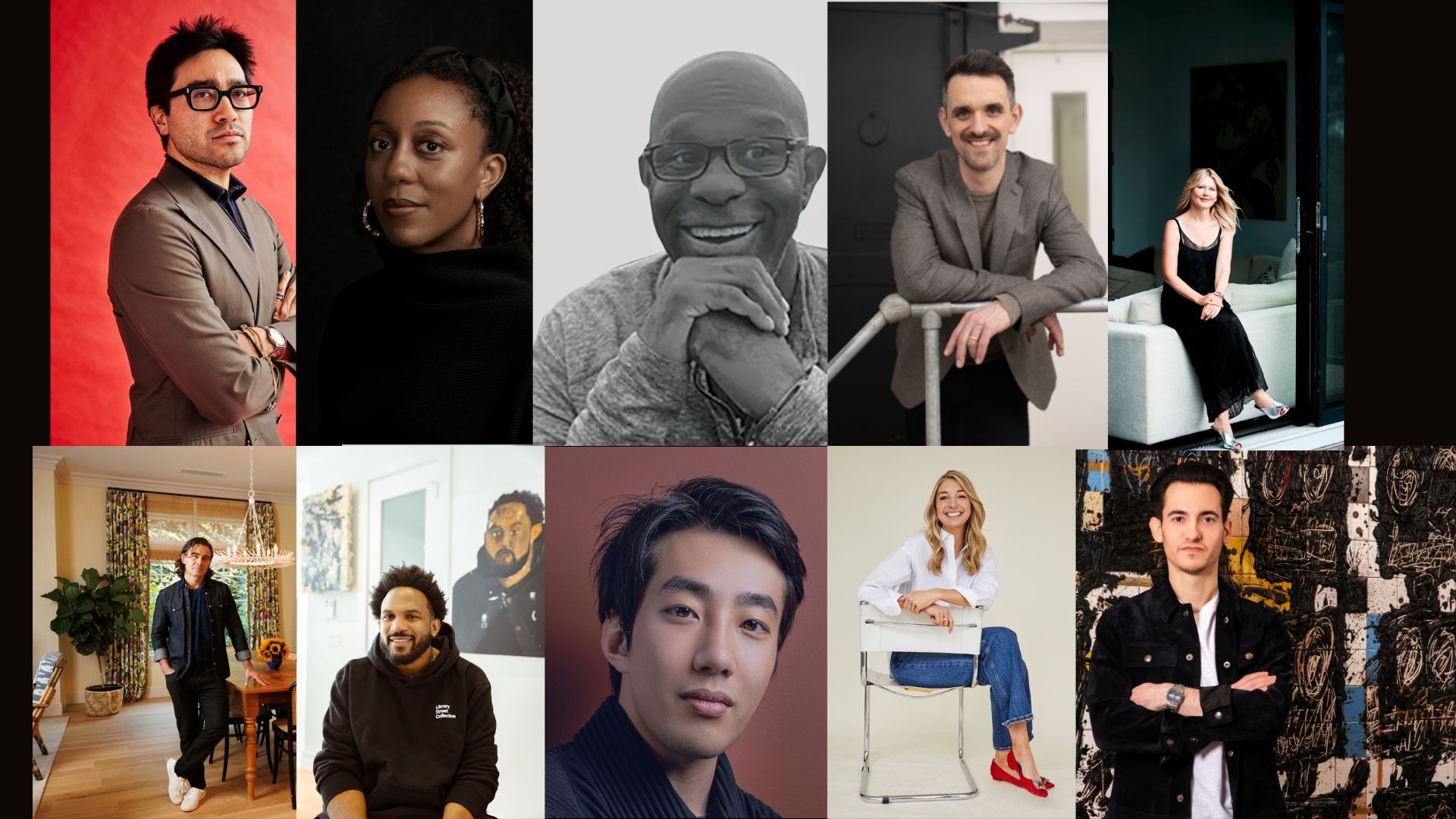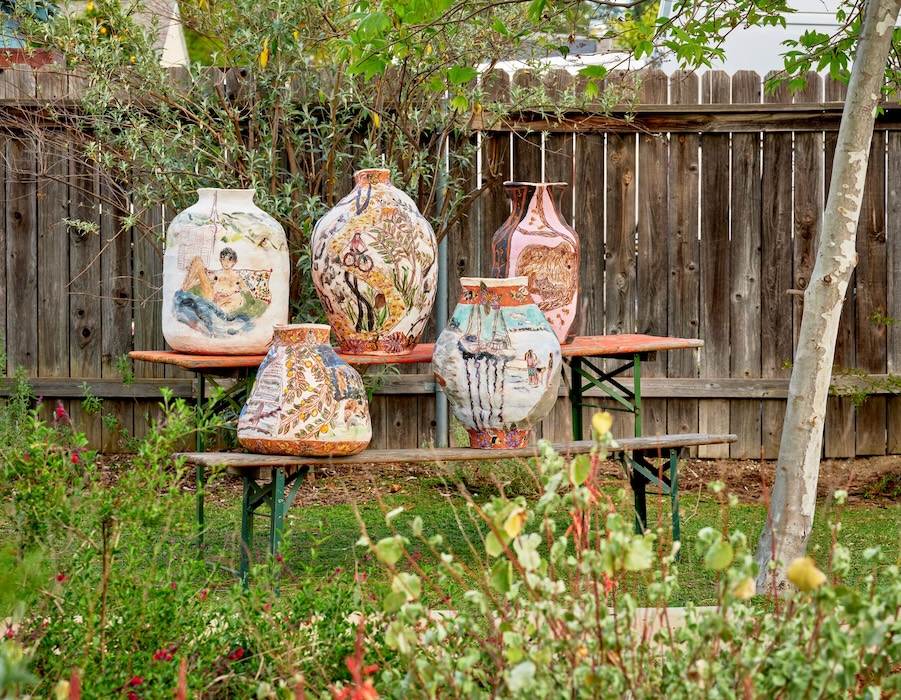In the spirit of artistic collaboration and horological progress, luxury Swiss watchmaker Hublot joins forces with New York-based artist Daniel Arsham, bringing to light the groundbreaking, limited-edition Arsham Droplet. An ingenious take on the time-honored pocket watch, beguiling details of antiquity are intermeshed with masterful feats of technical innovation and engineering to produce an unparalleled timepiece bridging eras, elements, and emotions.
The multi-faceted work of wearable art functions as a nimble pocket watch, breathtaking pendant, and meditative table clock. Swathed in the energetic green of Arsham’s studio logo, and invoking the artist’s signature prowess in evolving familiar objects into mystical “future relics,” the Droplet sparks a significant turning point at the intersection of creativity and horology.
Motivated by the divine fluidity of Mother Nature, dynamic features of titanium, rubber, and sapphire crystal rise and fall together with singular complication and purity. In 99 exclusive iterations, the personal treasure, celebrated collector’s piece, and cosmic family heirloom is further enhanced by a stamp of Arsham’s electrifying monogram.
Whitewall spoke with Arsham about the conception and construction of the world’s first sapphire pocket watch with Hublot, the beauty of imperfection, and an ever-evolving curiosity to play.
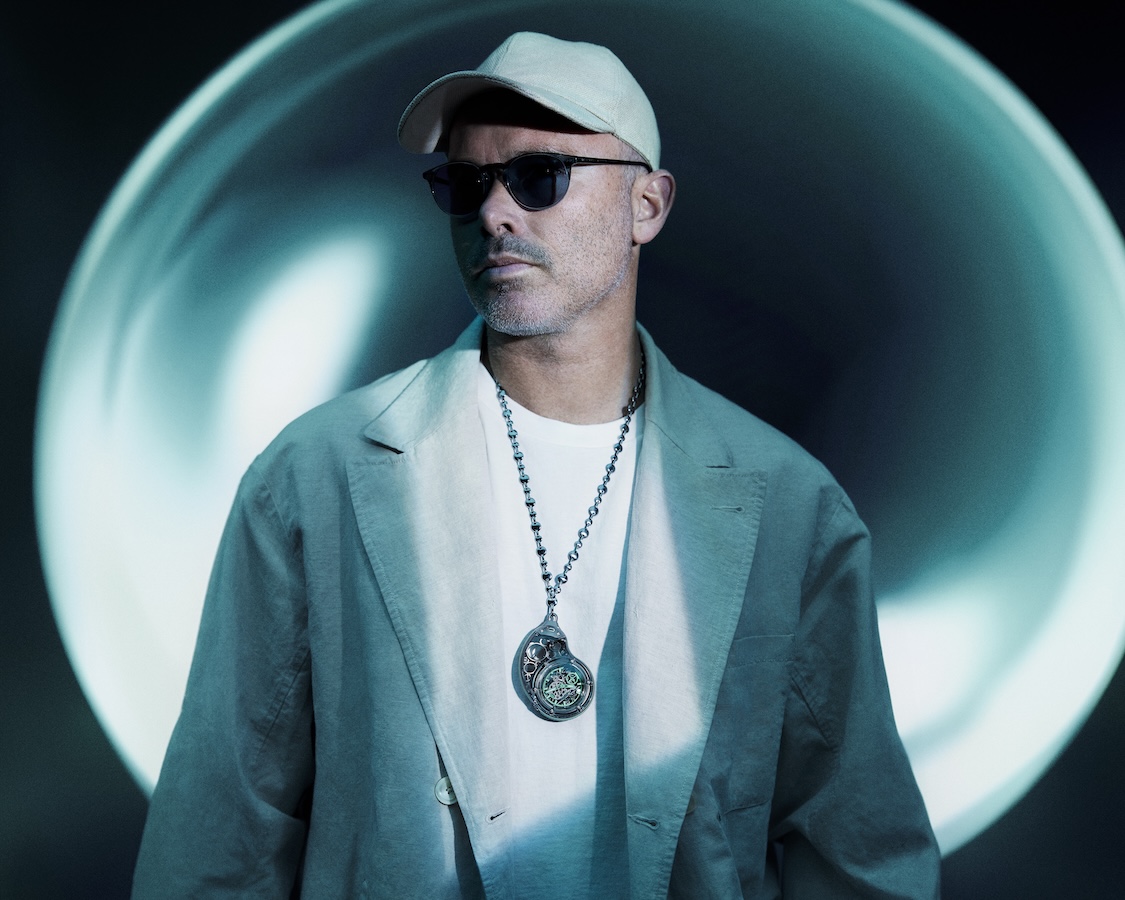 Hublot Ambassador Daniel Arsham wearing the Arsham Droplet, courtesy of the artist and Hublot.
Hublot Ambassador Daniel Arsham wearing the Arsham Droplet, courtesy of the artist and Hublot.
WHITEWALL: Can you tell us about the starting point of this collaboration?
DANIEL ARSHAM: When I visited the factory in Switzerland, I spent a lot of time looking at the sapphire specifically. It’s a crystal, so it relates back to some of my work. They also use titanium, and I was really fascinated with the watch. It has the bands that clip in and clip out—the world’s first sapphire pocket watch.
It feels amazing with the weight of it. We call this pocket watch Droplet, and the curve creates this bending of light that I think is so beautiful.
This is a brand-new design, as is the chain. The second chain is a necklace, so you can wear it around your neck like a pendant, there is versatility in it. It’s got the Meca-10 movement, which is a Hublot in-house developed movement and has a 10-day power reserve and then uses a lot of other languages, obviously the colorway from the green of my studio logo.
A lot of other things had to be re-engineered. It’s one of these things, I had seen the drawings, I had seen the renderings, but when I first held it physically—it was amazing.
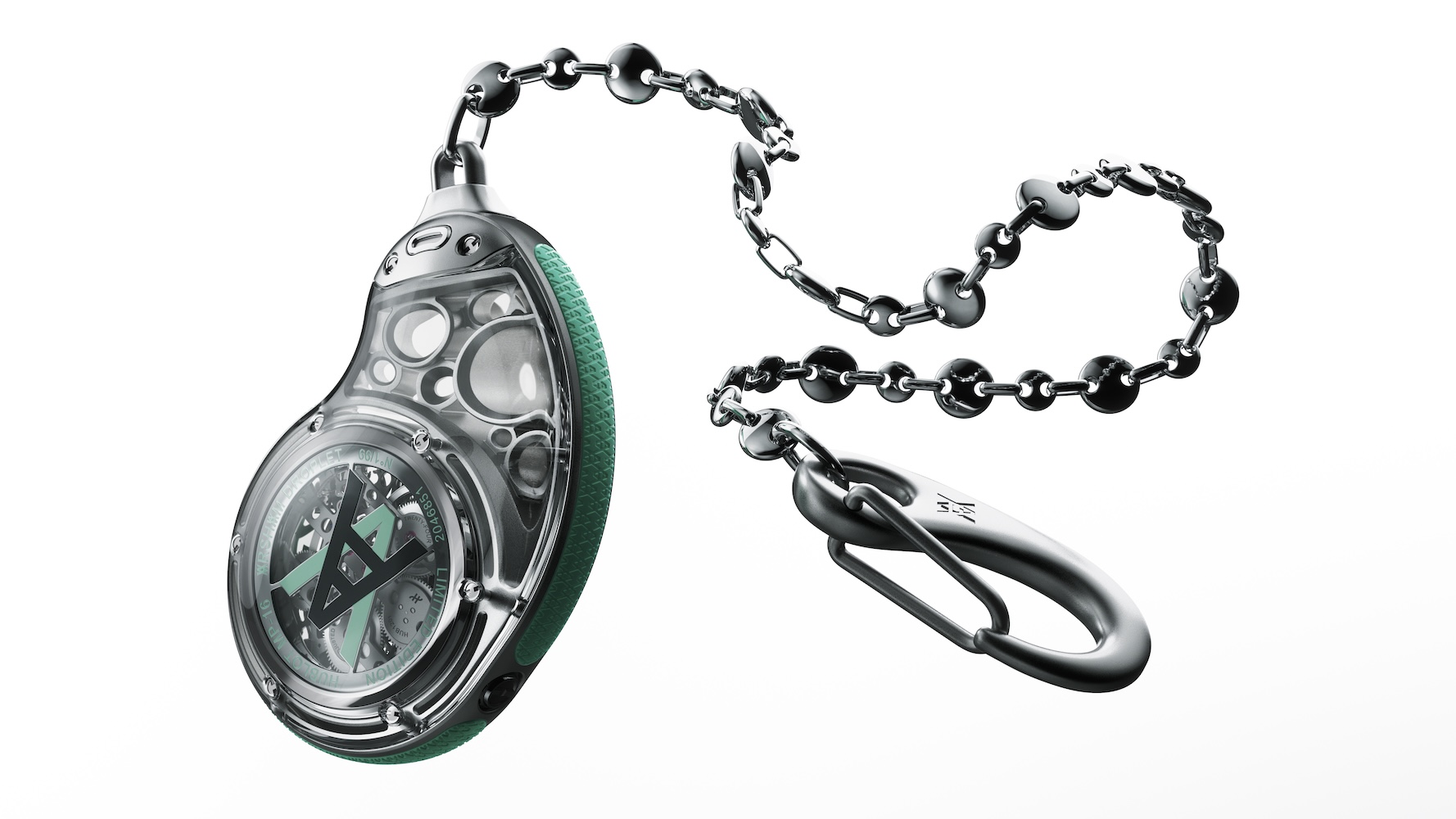 The Hublot Arsham Droplet, courtesy of the artist and Hublot.
The Hublot Arsham Droplet, courtesy of the artist and Hublot.
An Avant-Garde, Eye-Catching Conversation Piece
WHITEWALL: The weight is actually stunning. It’s something that you want to take out of your pocket and show people. It’s a conversation piece. It’s something that you want to play with.
DA: People look at it and they’re like, what is that? That’s their first thing.
WW: Now we spoke a bit about the technical aspect of it. Can you share with us the inspiration behind this innovative timepiece?
DA: One of the first things that I thought about after I had settled on this idea of doing a pocket watch was to create a shape that was unique to Hublot.
I wasn’t able to re-engineer…maybe we could have done this, they said, we can do it, it’s going to take six years to do a new movement. So, I said OK, which are the most interesting movements? The Meca-10, obviously it’s a complex movement. Then I started thinking about, what is it going to feel like in the hand? I just kept doing drawings and settled on this asymmetrical shape.
Hublot is this very technical company. They never did anything asymmetrical before. I think it’s actually a beautiful thing to have a mixture of something that’s sort of imperfect, and it really looks like this kind of water droplet in movement.
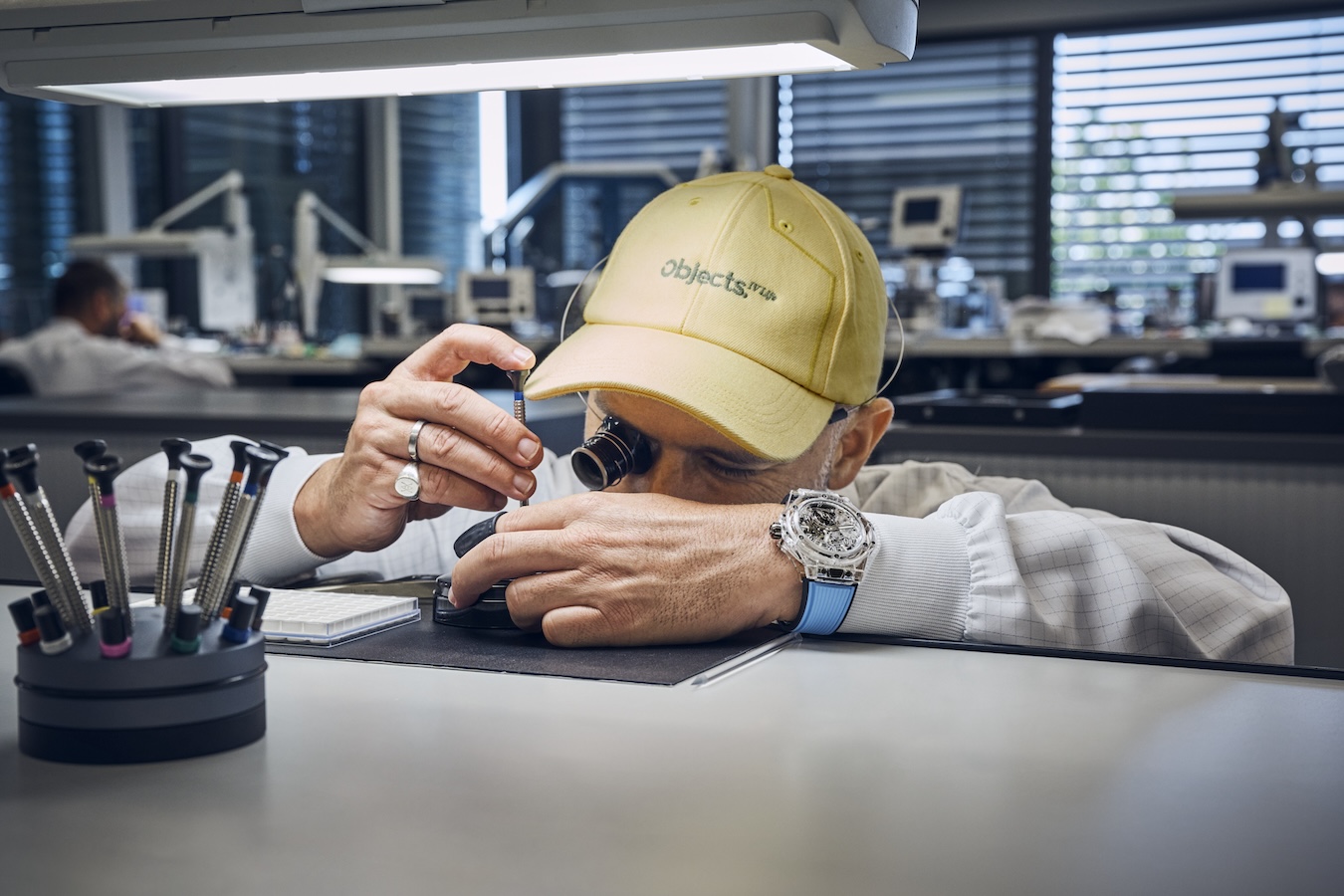 Daniel Arsham visits the Hublot manufacture, courtesy of the artist and Hublot.
Daniel Arsham visits the Hublot manufacture, courtesy of the artist and Hublot.
An Object Spanning Eras and Technologies
WW: The Arsham Droplet blends elements of the past, present, and future. How did you approach combining these different temporal dimensions in the design?
DA: I think in some ways, if you look at this sculpture here that has the mixture of antiquity and the future, the watch is the same.
It’s taking something, as you said, from the 19th century, that was a way of telling time before people were wearing wristwatches and mixing it with this future technology. It feels like an object that is kind of straddling two eras.
WW: I think it’s also bringing back the watch to what it is because it’s no longer just a functional element. It’s an aspirational and lifestyle element because you have your phone to tell you the time. Now the watch is back to being something that is more than just a tool. This is going towards what is appealing to the collectors of watches who will now have an art piece.
DA: Certainly, for people who collect watches, they could have 20 wristwatches, this is going to be unique in their collection.
WW: The incorporation of organic forms in the design is really something to discuss, and intriguing because you’ve never done it and never seen it before. How did the nature of it influence your vision of this timepiece?
DA: A lot came about through drawing, trying to create this kind of asymmetry, but also balancing it with some of the engineering requirements.
Earlier on, I didn’t want the scale of it to feel so big. We actually 3D modeled the whole thing, and I did 3D prints of various sizes. But when you’re talking about an object that is this small, 1mm can make a difference in the way that it feels and the weight. I settled on this basically after having done multiple 3D prints.
The weight is something that I couldn’t have anticipated though. We knew that it was going to be heavy, but without assembling the whole thing together, I had the titanium skeleton, the front and the back sapphire, but…
“For people who collect watches, they could have 20 wristwatches, this is going to be unique in their collection,” — Daniel Arsham
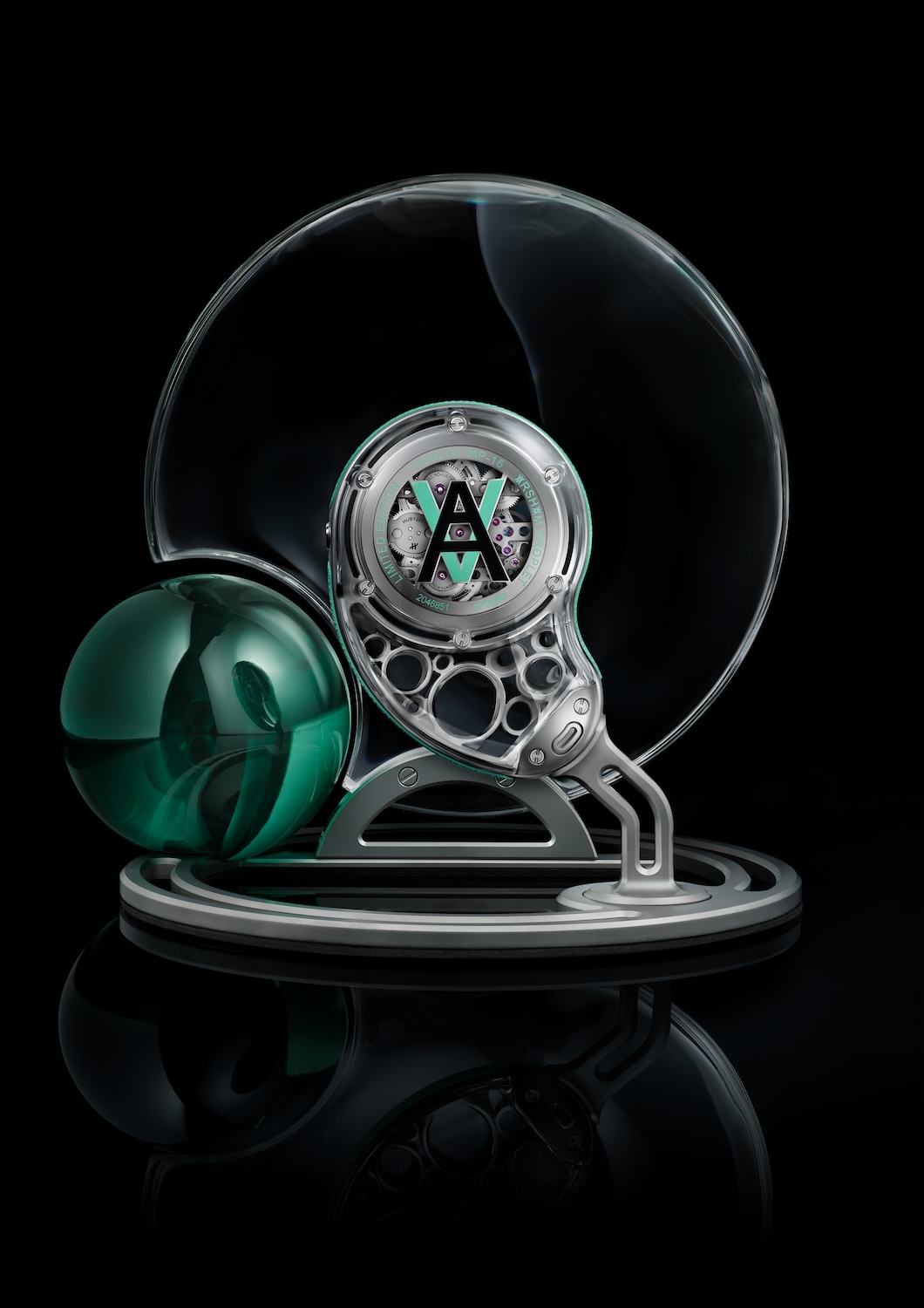 The Hublot Arsham Droplet, courtesy of the artist and Hublot.
The Hublot Arsham Droplet, courtesy of the artist and Hublot.
A Sapphire Magnifying Glass Unfolds as a Home Display for the Arsham Droplet
WW: The Droplet comes with a stand in sapphire to hold the pocket watch.
DA: Yes, this is a whole other element.
WW: It does hold significance within the overall project because they can’t live one without the other, and the unity of them creates the full vision.
DA: I think part of it for me was, when you get home, you put your watch in a jewelry drawer, or in your safe, and you don’t really enjoy it when it’s not on your wrist, you don’t have the sense of it.
So I started to think about—because this is not a wristwatch—can I somehow create something that you could see either on your desk or on your night stand? And the bending of the light with the sapphire made me think about a magnifying glass.
We created a custom magnifying glass that, basically, when you unclip it from the chain, or the necklace, the same clip mounting is in the frame.
WW: So it holds the watch when it’s actually resting.
DA: Exactly. It holds it in the center of this big magnifying glass.
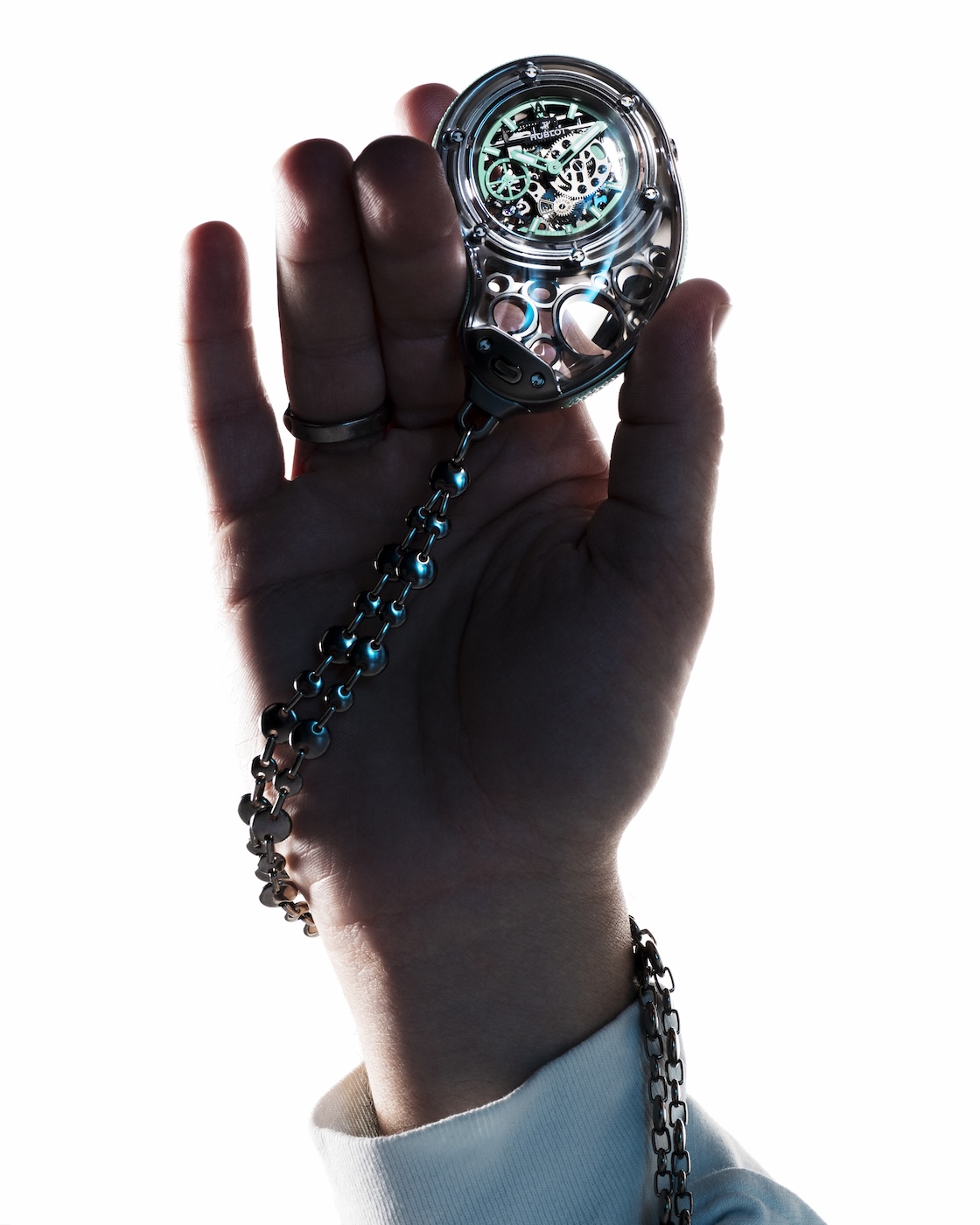 Hublot Ambassador Daniel Arsham & the Arsham Droplet, courtesy of the artist and Hublot.
Hublot Ambassador Daniel Arsham & the Arsham Droplet, courtesy of the artist and Hublot.
The Revisioned Meca-10 Movement and Exploring Materials
WW: The reworked meca-10 manufacture movement adds a layer of technical sophistication to the timepiece. What challenges did you face in integrating this movement into the design? Or integrating your design into it?
DA: I wanted a complex movement, and it was a lot about weighing. There are many different types of movement. This one seemed to sit best in it physically, and that’s kind of why we went there.
WW: How did this first collaboration on the product with Hublot influence your approach to watchmaking?
DA: We have a couple of other things that we’re trying to figure out as well, the next thing that I do with them is also quite challenging. A lot of it is patience.
The Swiss are very good at what they do, but all of it takes time. This is 3 years.
WW: Clearly. We were in Geneva last week and were talking to all the watchmakers. They’re working now on the things that they’re going to release in 7,8,9,10 years. Nature needs time to actually test the mechanism and everything.
As in all of this new body of work, there is a timelessness that refers to the concept of future architecture. How do you balance all those elements in your work as an artist, as a collaborator, as a designer—in everything?
DA: I think everything I work on is kind of an exploration of materials in a lot of ways.
There are other pieces in the show that are new, the mosaic, the work with MV Agusta, the motorcycle. I think it’s a curiosity and a desire to just play.
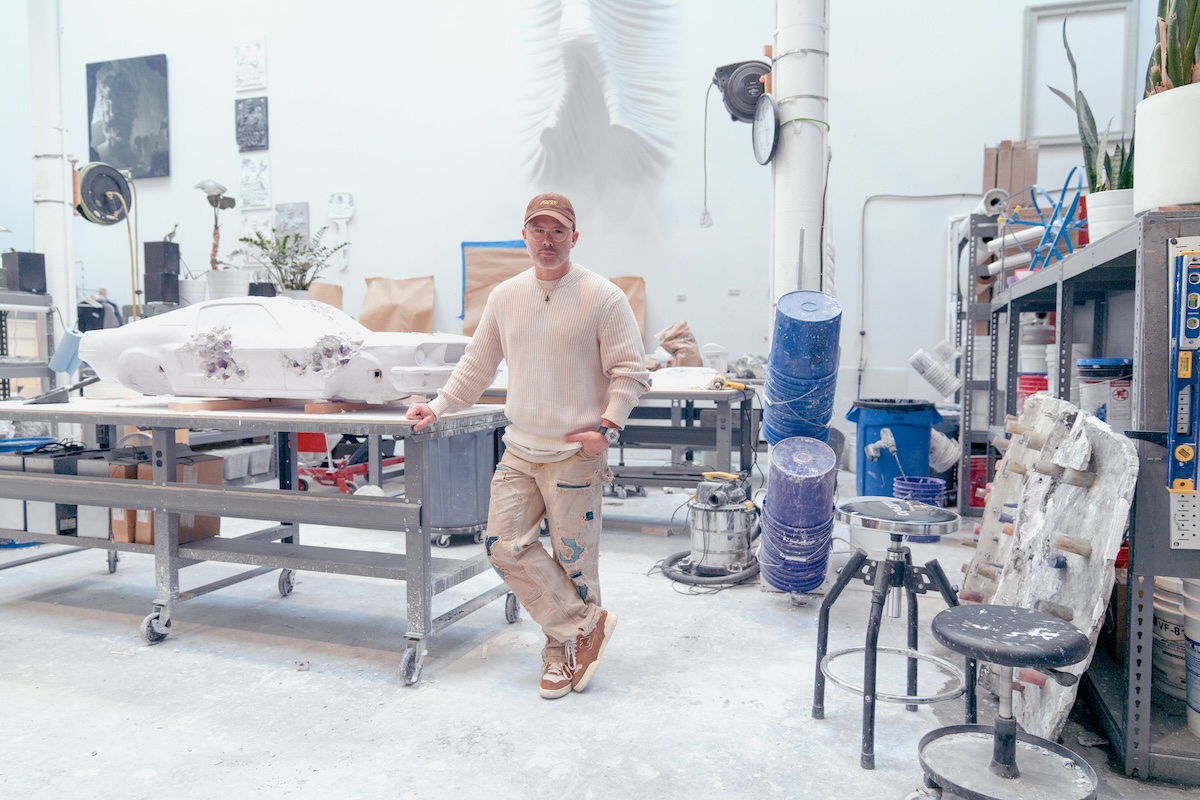 Hublot Ambassador Daniel Arsham workin in his studio, courtesy of the artist and Hublot.
Hublot Ambassador Daniel Arsham workin in his studio, courtesy of the artist and Hublot.
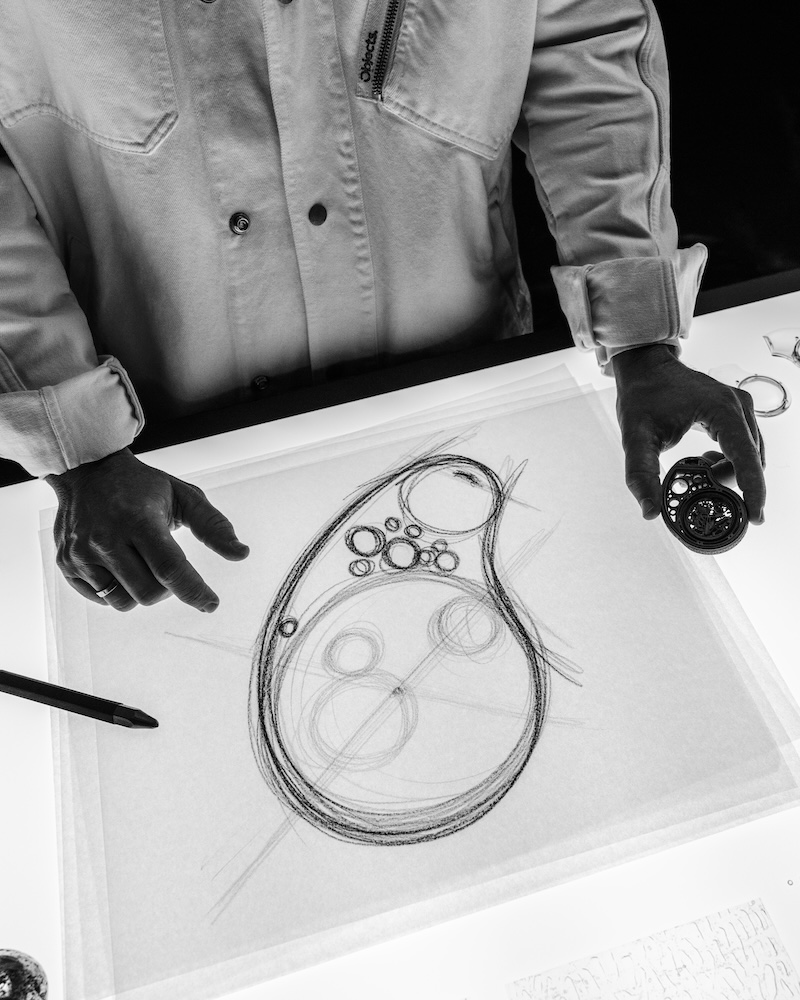 Hublot Ambassador Daniel Arsham designing the Arsham Droplet, courtesy of the artist and Hublot.
Hublot Ambassador Daniel Arsham designing the Arsham Droplet, courtesy of the artist and Hublot.
A Technical Jewel by Hublot and Daniel Arsham
WW: Last but not least, what do you hope viewers and collectors of this watch will experience when seeing it, purchasing it, and collecting it?
DA: Wonder—it’s so unexpected.
Everyone who sees it for the first time, they’re just like, what is this? I don’t even really know how to describe it. It’s a jewel almost, it looks like this kind of curved diamond that contains this kind of technical thing.
For me, it’s one of the most interesting objects that I’ve worked on in design, outside of the art world.
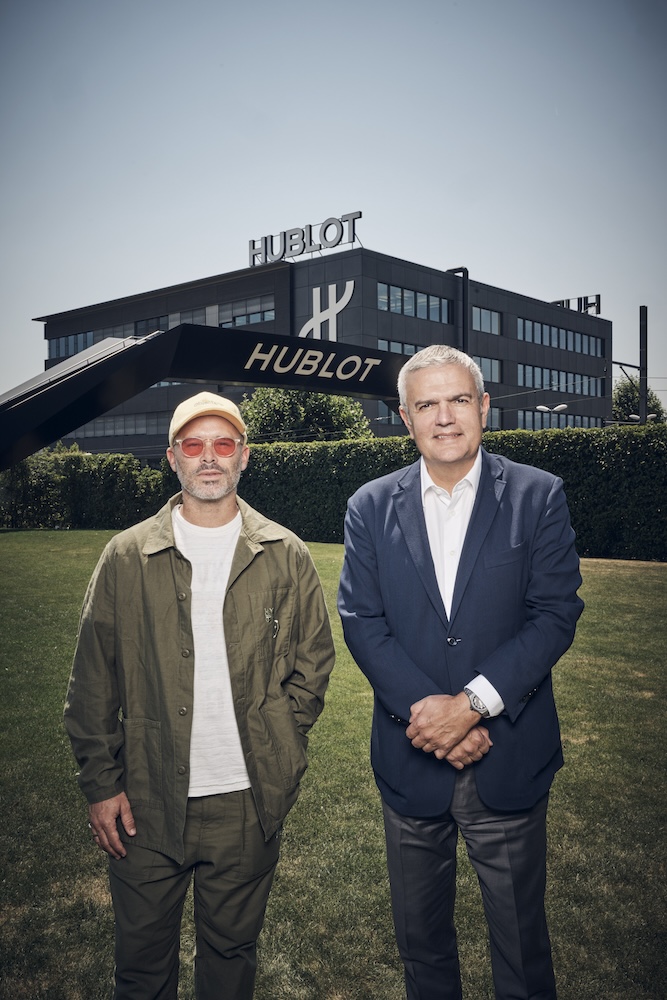 Daniel Arsham visits the Hublot manufacture, courtesy of the artist and Hublot.
Daniel Arsham visits the Hublot manufacture, courtesy of the artist and Hublot.








